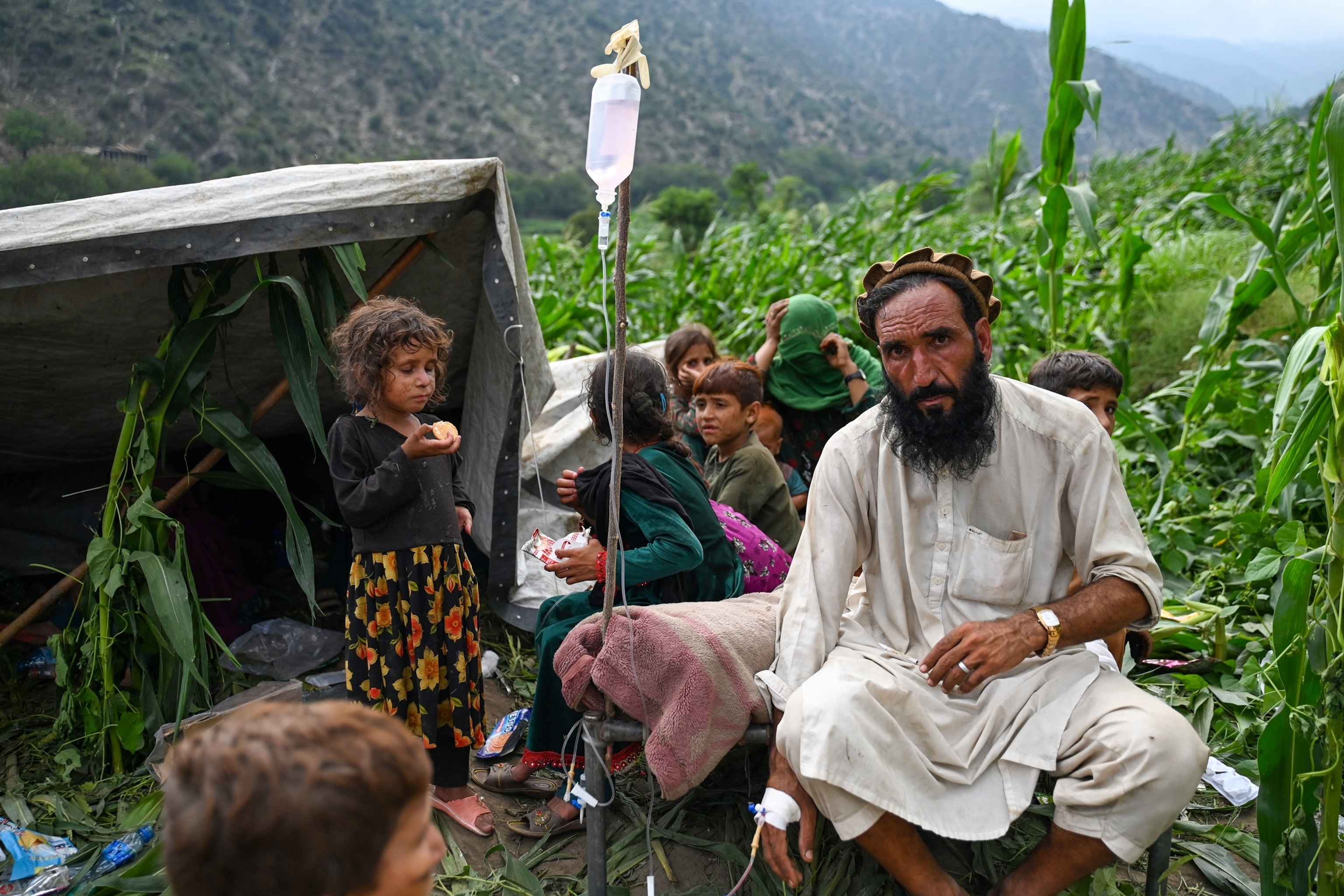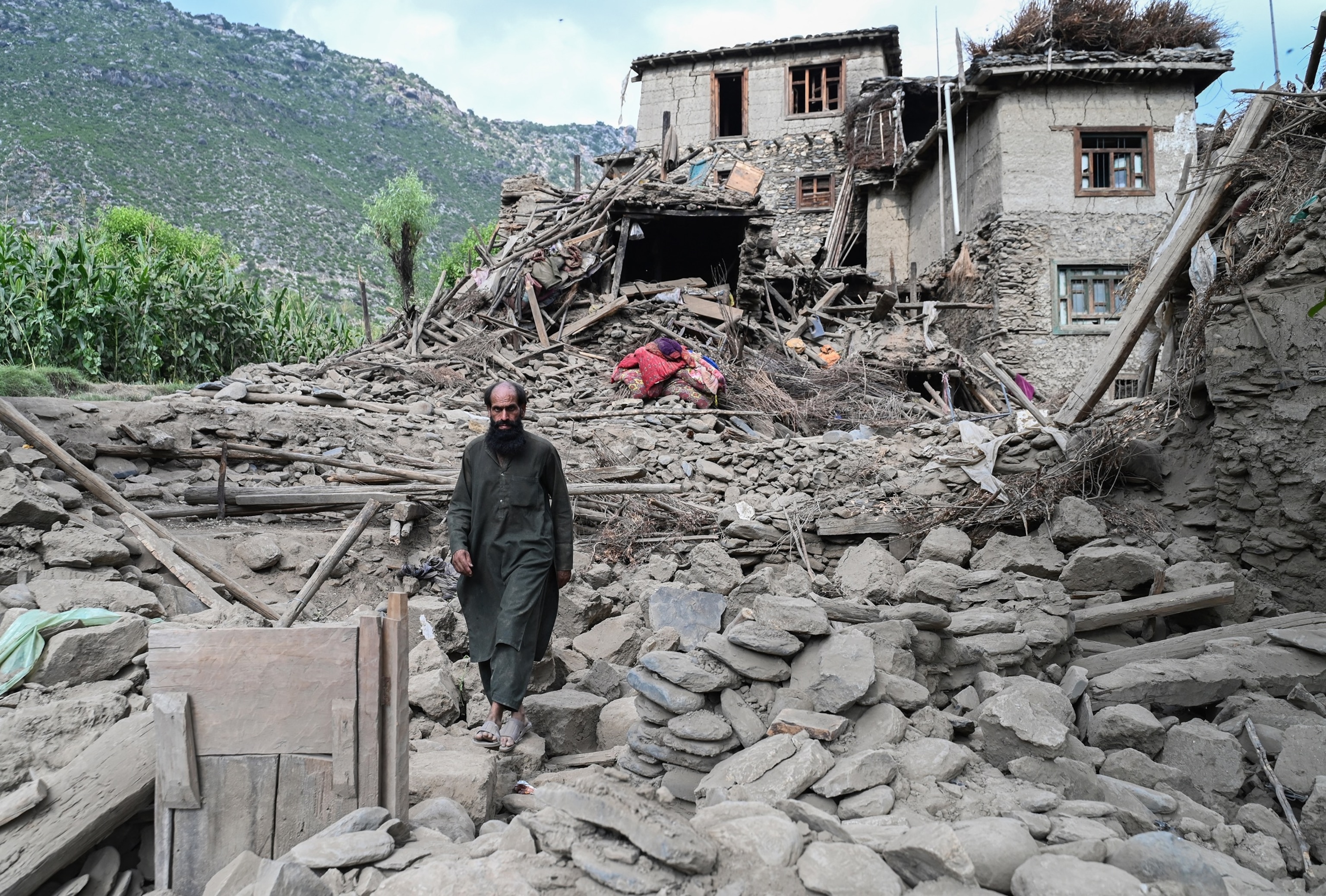ISLAMABAD, Pakistan and LONDON — The death toll from the earthquake in eastern Afghanistan, which all but destroyed several villages, rose on Tuesday to at least 1,411 people, a government spokesperson said.
Another 3,124 were injured in the 6.0 magnitude quake, which struck just before midnight on Sunday, Zabihullah Mujahid, the spokesperson, said on social media.
“Rescue operations are still underway in all the affected areas today,” Hamdullah Fitrat, the deputy spokesperson, said on Tuesday. “Dozens of commandos have been airlifted to areas where planes could not land to pull out the injured from the rubble and transport them to a suitable location.”
Amid rescue efforts, a second 5.2 magnitude earthquake struck eastern Afghanistan on Tuesday about 20 miles northeast of Jalalabad, according to the USGS.
Afghan volunteers and Taliban security personnel work to move injured people near a military helicopter following earthquakes in the Mazar Dara village of Nurgal, a district of the Kunar Province, in Eastern Afghanistan, on Sept. 1, 2025.
Wakil Kohsar/AFP via Getty Images
Shah Mahmood, a Taliban official in Nangarhar Province, said the quake on Sunday destroyed some 8,000 houses. Emergency responders have yet to reach some villages, where they fear there may be more dead and injured under the rubble, he said.
Sunday’s powerful earthquake’s epicenter was about 17 miles east of Jalalabad, according to the U.S. Geological Survey.
Almost all of the deaths were in Kunar Province, officials said in a statement shared Monday by Zabihullah Mujahid, a government spokesperson. Others were killed in Nangarhar Province, said Mufti Abdul Matin Qani, spokesperson for the Ministry of Interior.

An Afghan injured man receives intravenous drips in a corn field, after earthquakes at Mazar Dara village in Nurgal district, Kunar province, in Eastern Afghanistan, on September 1, 2025.
Wakil Kohsar/AFP via Getty Images
Deadly earthquakes have struck Afghanistan several times in recent years, including a 5.9 magnitude quake in June 2022 and a 6.3 magnitude one in October 2023. The death toll for each of those quakes rose to over 1,000 people, local officials said in their aftermaths.
Earthquakes are common in both eastern and western Afghanistan, where the India plate and the Eurasia plate intersect underneath the Hindu Kush mountains range, according to USGS.
“Since 1950, 71 other magnitude 6 or larger earthquakes occurred within 250 km of the August 31 earthquake, including six magnitude 7 and larger earthquakes,” USGS said in a summary of the activity it recorded during Sunday’s quake and the aftershocks.
The first strong quake struck at about 11:47 p.m. local time on Sunday and was followed by four weaker-but-still-powerful aftershocks into Monday, the USGS said. Those aftershocks measured 5.2, 5.2, 4.7 and 4.6, the organization said.
An estimated 12,000 people have been directly affected by Sunday’s, according to the World Health Organization in Afghanistan.
The hardest hit districts and villages in Kunar were Chawkay, Nurgal, Chapa Dara, Dara-e-Pech and Watapur, the WHO said in a report dated Monday. Structures in other villages in Nangarhar and Laghman provinces were also damaged, the report said.
“As the scale of devastation from the Afghanistan earthquake becomes clearer, my deepest condolences go to the victims and their families,” Richard Bennett, the U.N. special rapporteur for the country, said on social media on Tuesday.

An man Afghan walks past a damaged house following earthquakes in the Mazar Dara village of Nurgal, a district of the Kunar Province, in Eastern Afghanistan, on September 1, 2025.
Wakil Kohsar/AFP via Getty Images
Many of the health facilities in the affected regions appeared to be “functional” after the quake, the WHO said, adding that its local staff were working on-site at several locations in the region, including Nangarhar Regional Hospital.
At that hospital in Nangarhar, several injured children were being treated without their parents or relatives, according to a spokesperson for the Ministry of Health.
“These are painful and unbearable moments,” Dr. Sharafat zaman Amar, the spokesperson, said in a social media post that included pictures of several children with visible injuries and bandages.
ABC News’ Will Gretsky, Somayeh Malekian and Othon Leyva contributed to this report.

